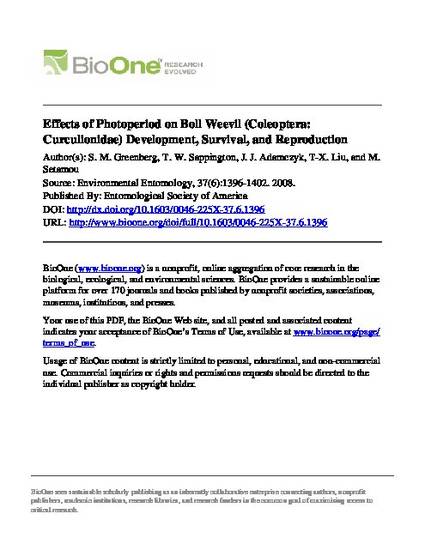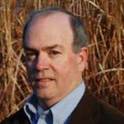
Effects of photoperiod on development, survival, feeding, and oviposition of boll weevils,Anthonomus grandis grandis Boheman, were assessed under five different photophases (24, 14, 12, 10, and 0 h) at a constant 27°C temperature and 65% RH in the laboratory. Analyses of our results detected positive relationships between photoperiod and puncturing (mean numbers of oviposition and feeding punctures per day), and oviposition (oviposition punctures/oviposition+feeding punctures) activities, and the proportion of squares attacked by boll weevil females. When boll weevil females developed in light:darkness cycles, they produced a significantly higher percentage of eggs developing to adulthood than those developed in 24-h light or dark conditions. In long photoperiod (24:0 and 14:10 h), the number of female progeny was significantly higher and their development time was significantly shorter than those developed in short photoperiod (0:24 and 10:14 h). Lifetime oviposition was significantly highest at 12- and 14-h photophase, lowest at 0- and 10-h photophase, and intermediate at 24 h of light. Life table calculations indicated that boll weevil populations developed in a photoperiod of 14:10 and 12:12 (L:D) h will increase an average of two-fold each generation (Ro) compared with boll weevils developed in 24:0- and 10:14-h photoperiods and 15-fold compared with those at 0:24 h. Knowledge of the photoperiod-dependent population growth potential is critical for understanding population dynamics to better develop sampling protocols and timing insecticide applications.
Available at: http://works.bepress.com/thomas_sappington/29/

This article is from Environmental Entomology 37 (2008): 1396, doi:10.1603/0046-225X-37.6.1396